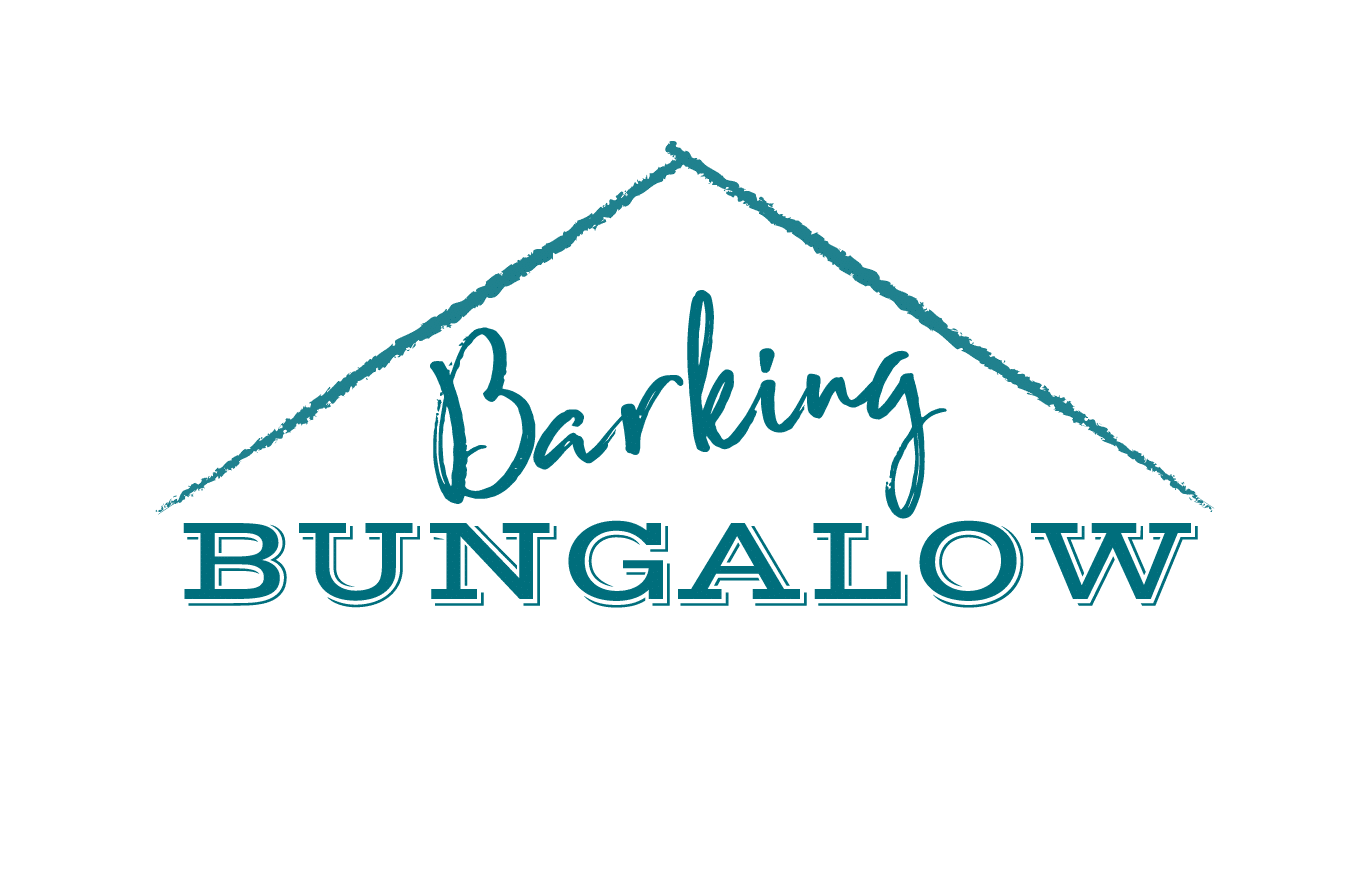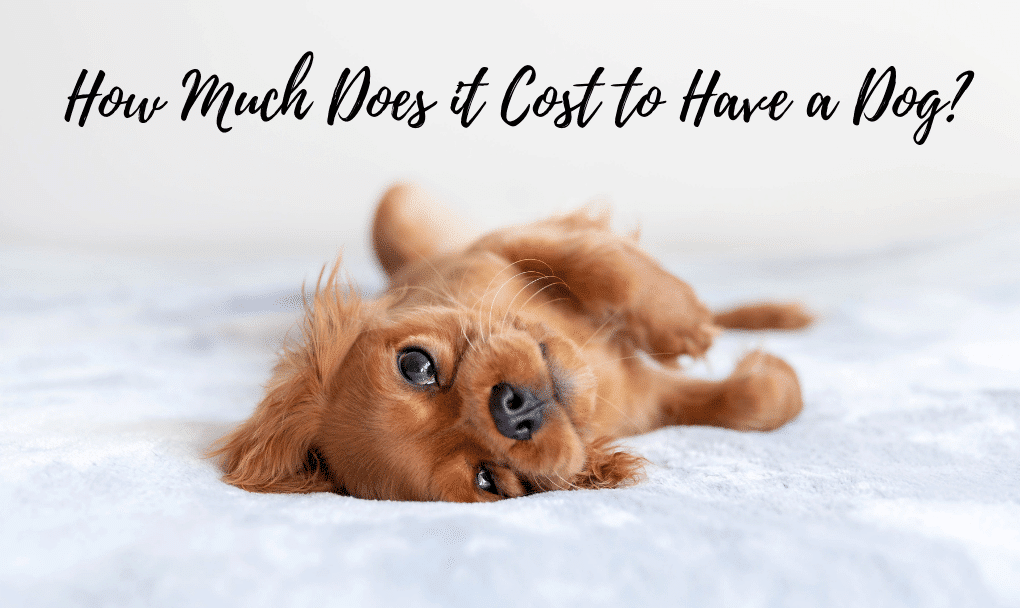While cuddling with a new pup may seem priceless, it’s smart to be prepared for what it cost to have a dog. It can be tough to wrap your head around the ins and outs of budgeting for a dog, so follow along with this guide to prepare for your new canine companion.
Cost to Have a Dog – The Initial Expenses
In addition to the start-up cost to have a dog, make sure to budget for their annual expenses. Here’s what you’ll be paying for initially and yearly with a pup.
Adoption Fees
Typical adoption fees cover the following elements of first-time puppy care:
- Physical examination and possibly a follow-up exam
- Behavioral evaluation
- Core vaccinations
- Various preventative treatments, such as:
- Deworming
- Flea and tick treatment
- Canine heartworm test
- Microchip
- Spay or neuter surgery
- Necessary medications
- Collar and ID tag
Depending on what organization you adopt your dog from, your adoption fees might also come with a trial period for pet insurance.
In total, this all normally adds up to totals ranging from $118-667. Of course, this depends on your dog’s age, sex, and breed, so your exact price may be on the higher or lower end of this scale.
If you’re planning to buy your puppy from a breeder instead, your expected prices might vary quite extremely and will fluctuate heavily by breed. Because of this, you’ll need to research your desired breed far in advance to begin shaping your budget. Determine whether adoption or purchasing from a litter is best for you, then budget accordingly.
Food
The amount of food you need to buy for your pup will vary throughout its life. Plus, people who own small breed dogs will have to purchase far less food than someone with, say, a great dane.
You might also want to incorporate canned wet food now and then for the picky pups, which can boost a normally modest price tag to a much higher total. Further, you might be interested in trying offering your dog a homemade meal on occasion. All these factors will change your dog food budget.
Luckily, there are tools to help you home in on the proper budget for you based on your individual pet’s feeding needs and preferences. For example, Cummings Veterinary Medical Center at Tufts University gave the example of Bob, a 10-year-old neutered male chocolate lab.
Bob ate about 1,000 kcal per day, which is the average suggested amount for a maintenance diet for a “lightly active, indoor spayed or neutered dog” weighing 56 lbs and up.
This costed Bob’s owner:
- $45.60 for a 35-lb bag of dog food, equal to 3,665 kcal/kg.
- $0.78 per day
- $23 per month
- $282 per year
This cost breakdown was based on average prices for “premium” food. It’s also important to note that this assumes you will only ever buy one type of kibble – no treats, no wet food, and no unlucky visits to the grocery store to find out they’re sold out of your usual brand.
Still, if you want an exact price, feel free to use the Tuft University’s calculator. Otherwise, the American Society for the Prevention of Cruelty to Animals estimates the cost of dog food per year to range from $212 to 400, more or less.
Home Essentials
Some elements of dog ownership don’t change depending on your dog’s breed, or almost any other factors, at that. One of those constants in the cost to have a dog is the general need for essentials, including:
- Leash and collar: $25-35, depending on your dog’s size and the collar style and materials.
- Bed: $30-150+, depending on the size, style, and material.
- Crate: $35-125. This is a very modest range, as crates for large breeds near $200. If home design and style are a priority, plan for the higher end of that range.
- Toys (and treats): $40-75. Yes, toys are an essential part of owning a dog. A bored puppy is a destructive puppy, and the same is true of untrained ones. It’s best to invest in fun outlets for excess energy and chewing from the start than trying to manage behavioral problems retroactively.
- Food and water bowls: Alright, so yes, you could technically grab a mixing bowl, dump your dog’s kibble in that, and call it a day. (I won’t confirm or deny if I’ve done that.) However, the main reason why you should invest that extra $20-40 (roughly) is to prevent bacteria in pet food like bacteria like E. coli and MRSA.
Although these are staples for households with dogs, they’re not fixed. These necessities will fluctuate in price, too, as you’ll need an expansion plan for your growing pup. This affects everything but the toys and treats (and even that’s debatable). Have a plan ready for expanding your budget when the time comes.
Vaccines and General Health Care
You should incorporate a few health necessities in your budget, no matter your dog’s breed, sex, or age. Note that these essentials will be recurring throughout your dog’s entire life, so these prices aren’t just a one-time thing.
You’ll need to look ahead and ensure you leave the financial wiggle room to take proper care of your pup, as far as its medical needs are concerned. Here are the medical considerations in the cost to have a dog:
- Vaccines
- Heartworm test and prevention
- Flea and tick prevention
Some vaccinations may not be mandatory, depending on where you live. Others, like rabies, can eventually be administered only once every few years. So, your vaccine budget will change from year to year. It’s best to set aside $75-100+ per year.
Cost to Have a Dog – Annual Expenses
Out of the budgetary factors listed above, you’ll likely be paying the following on a daily, monthly, or yearly basis:
- Vaccinations
- Food
- Certain home essentials, depending on your dog’s age
The vaccination category is one area where you possibly have the most budgeting flexibility. It’s quite easy to find low-cost vaccine clinics, so you can still care for your dog, even if you’re penny-pinching.
Just know that prices can vary quite widely, being $20-40 for some and only $10-15 for others. Additionally, these prices are nearly always in combination with physical examination fees, which are often $30-50.
Of course, you should never set your budget for home essentials like toys in stone. I mean, you never know what type of toys or play and training equipment your dog will need at any point, especially if you’re interested in agility sports, hunting, and similar activities.
The ASPCA estimates that toys and treats, in general, could cost you about $40-75 annually, depending on the pup’s size.
Upgrades and Extras
Now, there are several aspects of owning a dog that are entirely subjective and fluctuate in frequency. For example, you might need emergency services one day. Emergency veterinary services range from free to more than $3,000, so you’ll need to start saving early.
Dogs with thick coats need to be groomed regularly so their hair doesn’t get matted, exposing them to additional health problems like skin disease and poor thermoregulation. Depending on your dog’s breed, grooming might run you $264-408 per year.
Next, consider the lifestyle you’re going to be leading with your dog. Are you and your pup going to be an energetic outdoors duo, trekking across rugged terrain, blazing trails every chance you get? Or are you going to be couch potatoes together in the inner city?
This’ll determine the level and type of training you need for your pup. This should be in addition to basic obedience training, which is a critical aspect of life with a dog, no matter your particular hobbies and interests. A basic obedience training class can cost you about $110, or $40 per hour, according to other estimates. From there, you can add on trick training, dock diving courses, and more.
A few non-essentials that you’ll have to think about when budgeting for a dog include:
- Boarding and travel fees: What do you plan to do with your dogs while you’re on vacation? If you want to board them with feeding and walking or playtime services, it’s best to set aside about $40-100 per night. USA Today estimates an average $2,858 spending total for pet sitting services at $25 per night.
- Note: If you’re not doing overnight services but still need someone to supervise your pup, consider doggy daycare. This costs about $15 per day.
- Dog walking services: As people are slowly filtering back into their corporate offices and out of their work-from-home spaces, they might want to have an extra set of eyes on their puppies. You can hire a dog walker to get your dog some fresh air while you’re away at work at about $10-35 per hour or $20 for 30 minutes.
Impact on Your Home
Another major factor in the cost to have a dog is the impact they have on our homes. Prevention is key. Investing in baby gates, washable rugs, claw protectors can prevent greater expenses down the road.
For instance, many homeowners can relate to the frustration of discovering scratches from dog nails on hardwood floors or torn or pee-stained carpet. Washable floor runners may set you back a few hundred dollars but that is nothing compared to the expense of replacing your hardwood flooring.
You might also need to invest in a powerful vacuum, which will add to your baseline cost estimates. If you have a particularly hairy breed like the great Pyrenees, any sort of shepherd, retrievers, and others, you could benefit from a vacuuming robot, like the Roomba or Botvac.
These can help remove an immense burden off your shoulders by taking care of the dog hair problem for you. This is especially handy for those moments where it seems the shedding will never stop.
Another form of preventative action you can take in your house is getting a puppy gate. This’ll help section off your home and keep your pup out of places it doesn’t belong, helping you maintain order and cleanliness (saving you repair money in the long run).
If you want a place for some off-leash play you may want fence in your backyard. Fencing typically costs $1-45 per foot, depending on the material.
In short, it’s best to give yourself a bit of a buffer in your budget by considering the potential puppy proofing you will need around the house. Then, you can tweak your spending accordingly.
Things to Consider
So, there are a couple of price points that can fluctuate even if you’ve planned down to the very last detail based on your dog’s size and age and your lifestyle. Mainly, these factors concern the dog’s breed.
Take the most popular breeds of 2020, as determined by the American Kennel Club (AKC), for example. These are:
- Labrador retrievers, available at a broad price range, from $300-1,200, or even as high as $3,000 in some cases
- French bulldogs, or “Frenchies,” are a notoriously expensive pup, ranging from average lows of $1,500-3,000, up to downright astronomical price points, up to $5,500-10,000 for certain genetic lines.
- German shepherd dogs, which cost between $1,000-2,000 on average, for registered pups
On top of purchase prices for purebred puppies, your dog’s breed influences its susceptibility to breed-specific illnesses. German Shepherd dogs are known for being predisposed to hip dysplasia, a condition that can cost an owner $4,800-19,200 over their dog’s lifetime.
On a less serious note, breed differences also influence more mundane costs, like the frequency and type of grooming services.
With all this said, you might want to get pet insurance, which can help cushion the cost to have a dog when unexpected health concerns arise, which can range from $10-100+.
So What is the The Cost to Have a Dog?
Caring for a dog is a rewarding experience, although it does cost a pretty penny. According to the ASPCA, the average dog owner should save about $1,471-2,008 for the cost to have a dog in their first year. The price may fall or rise from there, depending on many factors.
It may sound like a lot, but rest assured that it’s worth it. You’ll be reminded with every cuddle and precious moment shared with your fur baby.




